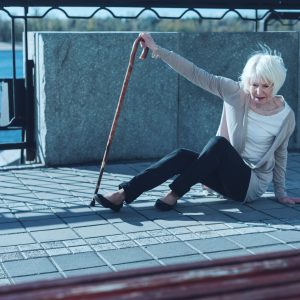Hold On: New Thinking On Fall Prevention Strategies

Hold On: New Thinking On Fall Prevention Strategies
October 16, 2019
Anyone who’s ever taken a tumble knows the feeling: losing your balance or missing a step and in the blink of an eye, you’re down on the ground, with potentially devastating results. Each year, three million emergency room visits are attributable to falls, with over 800,000 hospitalizations and 28,000 deaths as a result. And hip fractures? 95% of those are also due to falls, leading to immeasurable and life-altering outcomes for patients and their families.
To counter these trends, there are an enormous number of resources to help you with everything from improving your balance, to safety measures in your home, to strength building and more. For starters, check out some good basic overviews from the National Institutes of Health and the American Geriatric Society’s Health in Aging website. You’ll also find additional helpful resources on the agebuzz website. And for those wobbly legs, hold on to a chair and check out some easy balance exercises from Agingcare.com.
But with an aging population and no diminishment of falls in sight, it seems there’s much more that can be done to address what is, in essence, a public health crisis. Recently, Dr. Brad Manor, an expert on mobility and falls in the aging, has focused his research on the connection between balance and cognitive function, hypothesizing that addressing brain health may lessen the likelihood of falls. Have a seat and listen to him discuss his work here. On a more practical level, emergency room physician Edwin Leap, who deals with the consequences of falls in the ER, calls himself a “gravitologist” given the running battles against gravity that he encounters in his work. His suggestions for reducing the number of tumbles? Keep older adults moving and address the obesity crisis in our country. And when it comes to moving, one thing is becoming clear: Hospital strategies to minimize falls by keeping patients immobilized is taking a counter-productive toll on older hospital patients. In a recent article in the Washington Post, writer Melissa Bailey makes a convincing case that excessive caution around falls in hospitals has left older patients more disabled upon discharge than when they arrived at the hospital. One lesson seems clear: the more you keep moving, the stronger your body and the less risk you’ll have for a calamitous fall.







